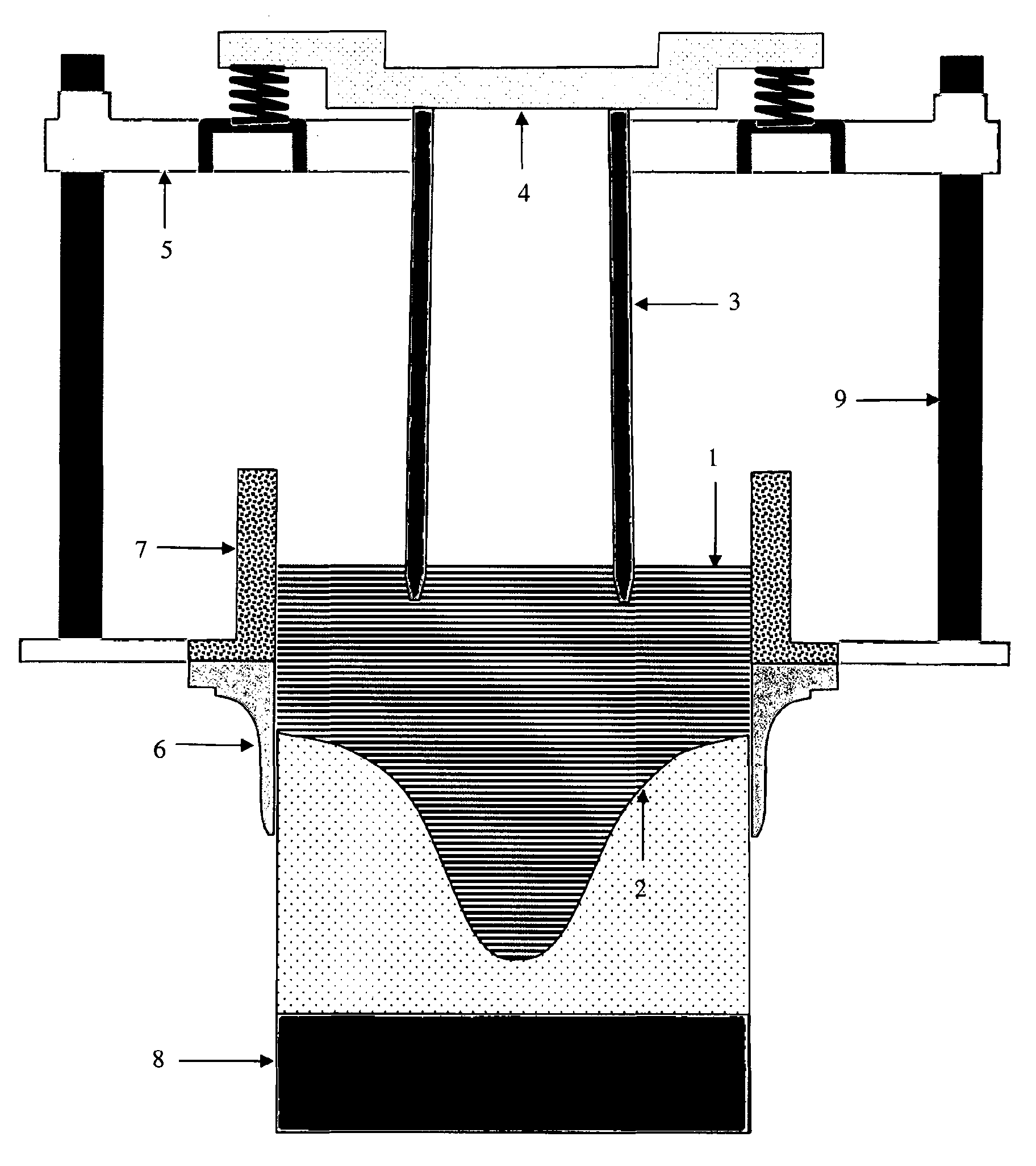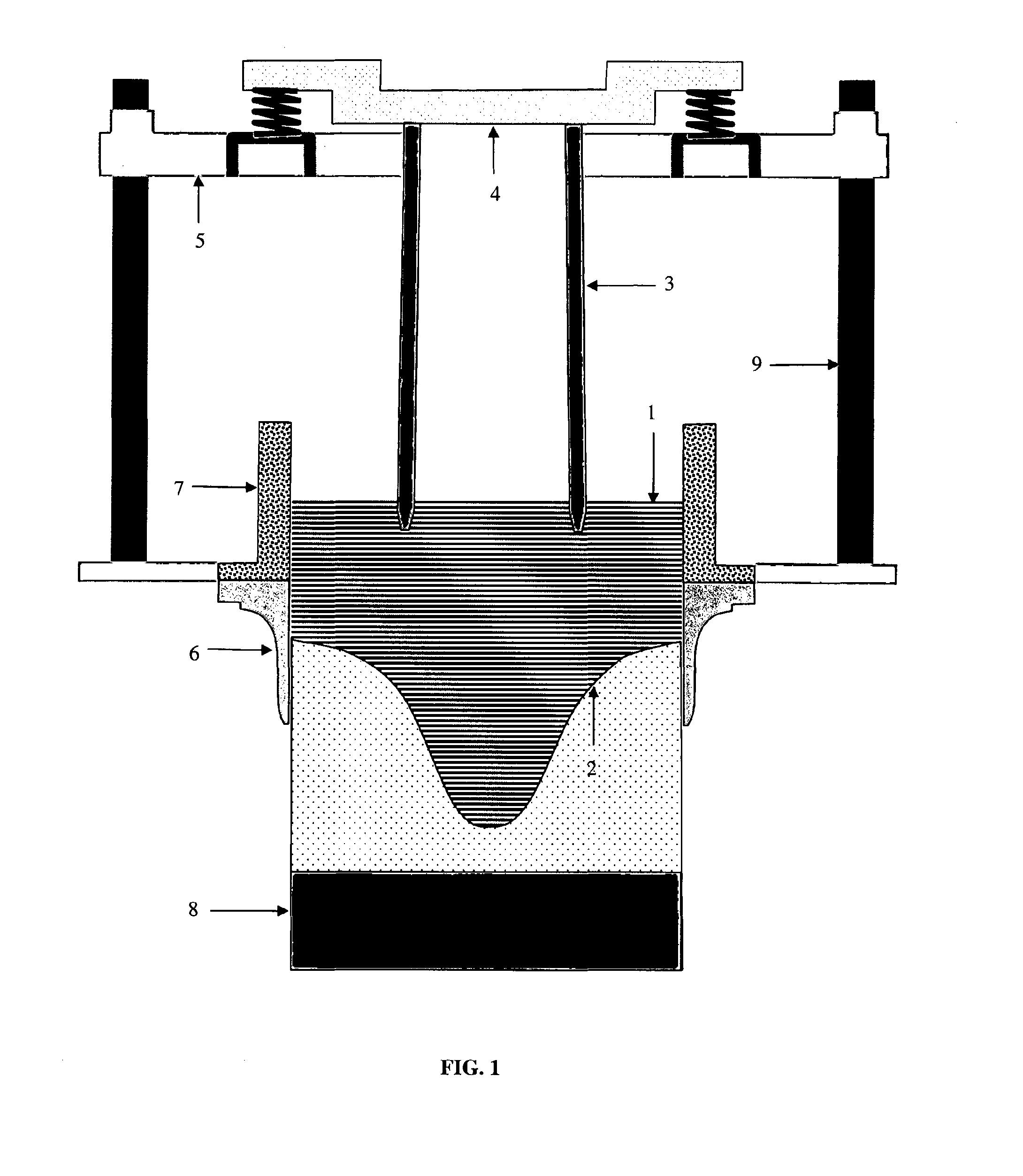Multi-alloy vertical semi-continuous casting method
a technology of vertical semi-continuous casting and multi-alloys, which is applied in the field of manufacturing of semi-finished products, can solve the problems of adversely affecting productivity and cost, non-negligible risk of subsequent delamination, and inconvenient use of hot co-rolling process for all types of alloys, and achieve the effect of reducing the number of macrosegregations
- Summary
- Abstract
- Description
- Claims
- Application Information
AI Technical Summary
Benefits of technology
Problems solved by technology
Method used
Image
Examples
example 1
[0068]This initial test is not consistent with the invention as the plate-type separator does not extend across the mould and only one cast of a single alloy was performed; the purpose of this test was to demonstrate the effectiveness of vibration as a means of preventing the plate from becoming entrained by the solidified metal.
[0069]A one-piece plate made of a glass-fibre and refractory composite material was introduced into and caused to vibrate in the casting pool for an AA1050 alloy rolling slab with cross-sectional dimensions of 1100×300 mm.
[0070]The refractory plate was 200 mm wide. It was inserted parallel to the large rolling surface, 65 mm from the mould wall.
[0071]The refractory composite plate was vibrated by means of a “Netter NTC” pneumatic vibrator, as used for emptying grain silos and hoppers. This vibrator unit generates low-amplitude, multi-directional vibrations.
[0072]The vibrating plate was brought into contact and held against the solidification front.
[0073]A ro...
example 2
[0076]The following materials were cast during this test:
[0077]a bi-alloy slab with an outer casing in AA5083 alloy and a core in AA7449 alloy, a typical composition for armour plating applications.
[0078]a bi-alloy slab with an outer casing in AA6016 alloy and a core in AA7021 alloy, a typical composition for automotive body panel applications.
[0079]The dimensions of the total cross-section of the slabs were 1100×300 mm.
[0080]For these tests, a one-piece separator made of glass fibre / refractory composite material was produced with an essentially rectangular cross-section designed to mate with the solidification front along a horizontal plan. Using this separator, a 75 mm thick outer layer of alloy was cast around the perimeter of the slab.
[0081]In the radiused parts near the corners, dictated by the shape of the solidification front in those zones, the core was homothetic with the total cross-section, having typical dimensions of 950×150 mm.
[0082]The separator was 12 mm thick along ...
PUM
| Property | Measurement | Unit |
|---|---|---|
| frequency | aaaaa | aaaaa |
| vibration frequency | aaaaa | aaaaa |
| frequency | aaaaa | aaaaa |
Abstract
Description
Claims
Application Information
 Login to View More
Login to View More - R&D
- Intellectual Property
- Life Sciences
- Materials
- Tech Scout
- Unparalleled Data Quality
- Higher Quality Content
- 60% Fewer Hallucinations
Browse by: Latest US Patents, China's latest patents, Technical Efficacy Thesaurus, Application Domain, Technology Topic, Popular Technical Reports.
© 2025 PatSnap. All rights reserved.Legal|Privacy policy|Modern Slavery Act Transparency Statement|Sitemap|About US| Contact US: help@patsnap.com



